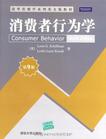消费者行为学
2009-12
希夫曼(Leon G.Schiffman)、 卡努克(Leslie Lazar Kanuk) 清华大学出版社 (2009-12出版)
(美)希夫曼,(美)卡努克 著
561
无
世纪之交,中国与世界的发展呈现最显著的两大趋势——以网络为代表的信息技术的突飞猛进,以及经济全球化的激烈挑战。无论是无远弗界的因特网,还是日益密切的政治、经济、文化等方面的国际合作,都标示着21世纪的中国是一个更加开放的中国,也面临着一个更加开放的世界。教育,特别是管理教育总是扮演着学习与合作的先行者的角色。改革开放以来,尤其是20世纪90年代之后,为了探寻中国国情与国际上一切优秀的管理教育思想、方法和手段的完美结合,为了更好地培养高层次的“面向国际市场竞争、具备国际经营头脑”的管理者,我国的教育机构与美国、欧洲、澳洲以及亚洲一些国家和地区的大量的著名管理学院和顶尖跨国企业建立了长期密切的合作关系。以清华大学经济管理学院为例,2000年,学院顾问委员会成立。并于10月举行了第一次会议,2001年4月又举行了第二次会议。这个顾问委员会包括了世界上最大的一些跨国公司和中国几家顶尖企业的最高领导人,其阵容之大、层次之高。超过了世界上任何一所商学院。在这样高层次、多样化、重实效的管理教育国际合作中,教师和学生与国外的交流机会大幅度增加,越来越深刻地融入到全球性的教育、文化和思想观念的时代变革中,我们的管理教育工作者和经济管理学习者,更加真切地体验到这个世界正发生着深刻的变化,也更主动地探寻和把握着世界经济发展和跨国企业运作的脉搏。我国管理教育的发展,闭关锁国、闭门造车是绝对不行的,必须同国际接轨,按照国际一流的水准来要求自己。正如朱镕基同志在清华大学经济管理学院成立十周年时所发的贺信中指出的那样:“建设有中国特色的社会主义,需要一大批掌握市场经济的一般规律,熟悉其运行规则,而又了解中国企业实情的经济管理人才。清华大学经济管理学院就要敢于借鉴、引进世界上一切优秀的经济管理学院的教学内容、方法和手段,结合中国的国情。
把握消费者行为特点是在当前激烈市场竞争条件下制定正确营销策略的前提。《消费者行为学(第9版)》是国外最流行的消费行为学教科书之一,自1978年第1版问世以来多次修订。《消费者行为学(第9版)》内容全面广泛,在内容安排上注重理论和实践相结合,不仅向读者系统阐述了消费者行为学中的基本概念,而且介绍了消费者行为研究领域中的最新发现以及消费者行为理论在营销中具体应用的大量案例。全书分四大部分:第1部分为读者提供了学习研究消费者行为的背景知识和方法;第2部分讨论作为个体的消费者的行为特点;第3部分讨论社会和文化环境对消费者行为的影响;第4部分讨论消费者是如何制定购买决策的。 《消费者行为学(第9版)》既适合用作MBA、市场营销及相关专业本科生或研究生教材,也可供相关领域的研究人员和实际工作者参考。
作者:(美国)希夫曼(Leon G.Schiffman) (美国)卡努克(Leslie Lazar Kanuk)
第1部分 引言第1章 消费者行为:起源与战略应用第2章 消费者研究第3章 市场细分第2部分 作为个体的消费者第4章 消费者动机第5章 个性和消费者行为第6章 消费者感知第7章 消费者学习第8章 态度的形成和转变第9章 沟通和消费者行为第3部分 处在一定社会和文化环境下的消费者第10章 参考群体和家庭的影响第11章 社会阶层和消费者行为第12章 文化对消费者行为的影响第13章 亚文化和消费者行为第14章 跨文化下的消费者行为:国际视角第4部分 消费者的决策制定过程第15章 消费者的相互影响和创新扩散第16章 消费者决策案例术语表索引
插图:Arousal of motivesMost of an individual's specific needs are dormant much of the time. The arousal of any particular set of needs at a specific moment in time may be caused by internal stimuli found in the individual's physiological condition, by emotional or cognitive processes, or by stimuli in the outside environment.Physiological arousalBodily needs at any one specific moment in time are based on the individual's physiological condition at that moment. A drop in blood sugar level or stomach contractions will trigger awareness of a hunger need. Secretion of sex hormones will awaken the sex need. A decrease in body temperature will induce shivering, which makes the individual aware of the need for warmth. Most of these physiological cues are involuntary; however, they arouse related needs that cause uncomfortable tensions until they are satisfied. For example, a per- son who is cold may turn up the heat in his bedroom and also make a mental note to buy a warm cardigan sweater to wear around the house. Figure 4.8 demonstrates arousal of a physiological need.Emotional arousalSometimes daydreaming results in the arousal or stimulation of latent needs. People who are bored or who are frustrated in trying to achieve their goals often engage in daydreaming (autistic thinking), in which they imagine themselves in all sorts of desir- able situations. These thoughts tend to arouse dormant needs, which may produce uncomfortable tensions that drive them into goal-oriented behavior. A young woman who daydreams of a torrid romance may spend her free time in Internet single chat rooms; a young man who dreams of being a famous novelist may enroll in a writing workshop.Cognitive arousalSometimes random thoughts can lead to a cognitive awareness of needs An advertisement that provides reminders of home might trigger instant yearning to speak with one's parents This is the basis for many long-distance telephone company campaigns that stress the low cost of international long-distance rates.Environmental (or situational) arousalThe set of needs an individual experiences at a particular time are often activated by specific cues in the environment. Without these cues, the needs might remain dormant. For example, the 6 o'clock news, the sight or smell of bakery goods, fast-food commercials on television, the end of the school day——all of these may arouse the "need" for food. In such cases, modification of the environment may be necessary to reduce the arousal of hunger.A most potent form of situational cue is the goal object itself. A woman may experi- ence an overwhelming desire to visit Australia when she is drawn to the scene depicted in Figure 4.9; a man may suddenly experience a "need" for a new car when passing a dealer's display window. Sometimes an advertisement or other environmental cue produces a psychological imbalance in the viewer's mind. For example, a young college student who constantly uses his cell phone may see a new, slick-looking cell phone model with more features displayed in a store window. The exposure may make him unhappy with his old cell phone and cause him to experience tension that will be reduced only when he buys himself the new cell phone model.
《消费者行为学(第9版)》:清华营销学系列英文版教材。

无
买了一看才知道英文版,亚马逊不在标题里注明,也请在描述里注明好麽!!
这个是全英文版的,买中文版还是看第八版
英文版的,结果买错了。厚度还不错,没有翻开看过就是。
在学校复印也差不多这个价,而且这起码还是正版 不过当然比起彩色原版来说还是不太有质感
买来用作教材的,不错!